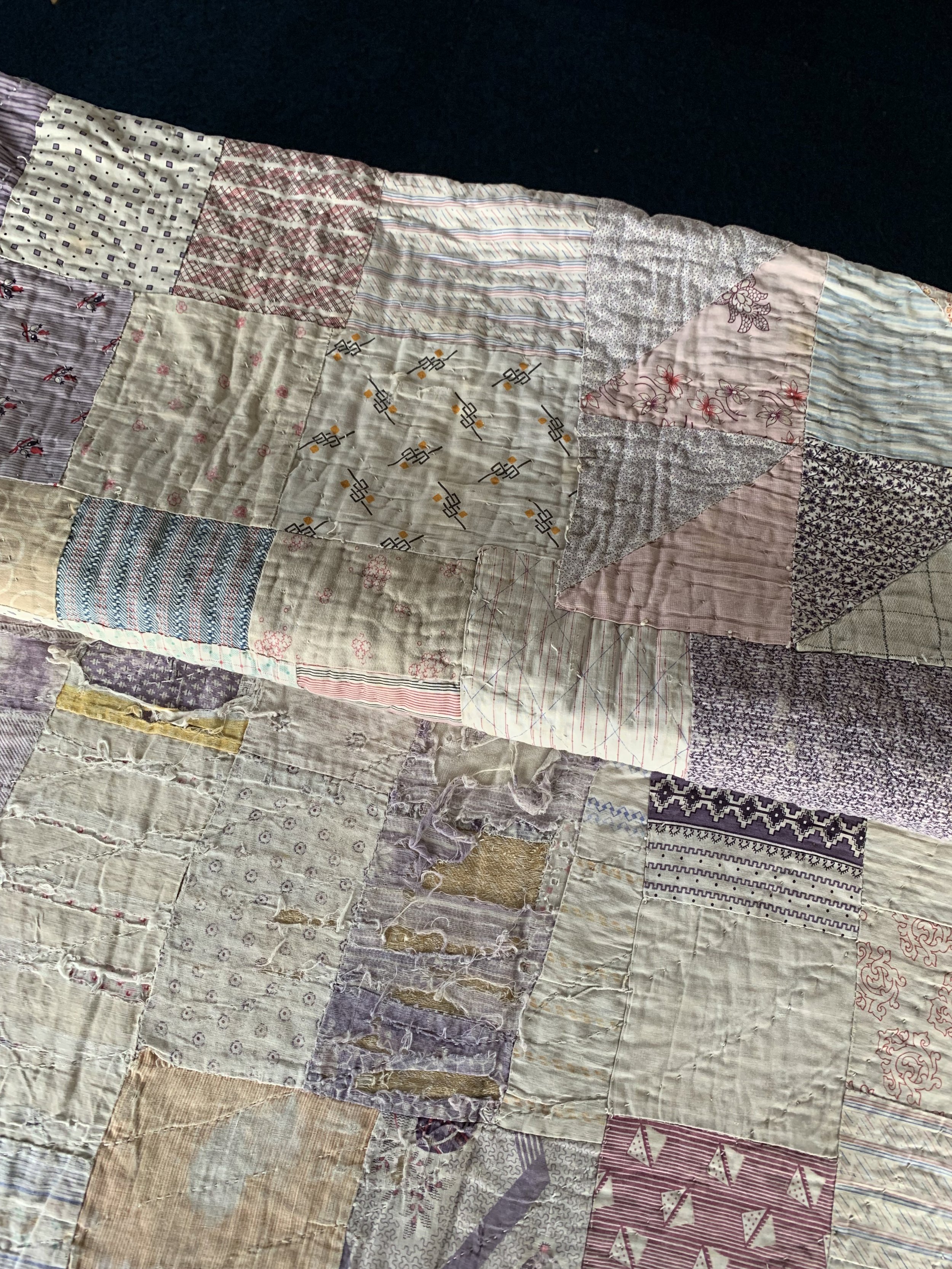
The heirloom’s tale
The heirloom’s tale
By Pompi Parry project volunteer
How often, when looking at objects in the museum, have we said: ‘If only this could talk and tell us its history?’ It is exciting when we delve behind the simple accession label and a history comes to light; this is exactly what has happened with one of the objects chosen from the fashion store for the Fashioning our world project.
This patchwork cover is unusual, it is not a beautiful assembly of neatly sewn, regularly shaped pieces, quilted with tiny stitches in a traditional design – but quite the opposite. It is made of random sized rectangles and triangles, worn and torn, patches on patches of fine everyday cotton fabrics laid onto a very heavy linen sheet and quilted with large straight lines in a diamond pattern. This cover has been used and cherished – it must have a history. Luckily the name and address of the donor are with the cover. The donor, Mrs Barnes, although now 92, is more than happy to share her memories and her family history with us. So, the story unfolds.
Mrs Barnes remembers the cover being very heavy, on the big bed in her parents holiday home Verney at Langton Matravers in Dorset. At the beginning of World War Two it was used to wrap a mattress and taken to her parents’ home on Wilton Road Salisbury, where it was stored in a tin trunk. Alongside the cover were costumes and dressing up clothes worn in the late 1920s when her parents ran and acted in the Bemerton Pantomime, her father the Dame and her mother the principal boy.
The trunk came to Mrs Barnes after the sad death of her parents in the fire on board the cruise ship Lakonia on its Christmas cruise 1963.
Mrs Barnes remembers that the quilt once belonged to her Great Grandmother Harriet Dowdell who was born in 1844. Harriet, the eldest of nine children was born in Fisherton Delamere (now de la Mere) to Thomas Dowdell an agricultural labourer and his wife Ruth.
By 1871 Harriet was in domestic service in London and her son (Mrs Barnes Grandfather, Alexander James Fraser) was born in 1873. By 1881 Harriet was a cook at a different address and her son was being fostered nearby by a widow who was a dressmaker. In 1891 she was living with nine ladies who were tailors.
When he grew up Alexander was married in London to a girl from Yorkshire. They had three children before she died in childbirth. The middle child, Catherine, who was then aged 7, was brought up by Harriet who was her grandmother.
In 1907 at the age of 63 Harriet married William Poolman and they lived at Wilton Road in Salisbury with Catherine.
Catherine attended Bishop Wordsworth School, which for several years took girls as well as boys. She learnt typewriting while a student at The Salisbury School of Art. In 1925 Catherine married Harry Northover and went on to have a daughter, who later became Mrs Barnes the donator of the cover to the museum.
Catherine and her husband continued to live with Harriet until her death in 1926, aged 81. She was remembered as warm person with a fine sense of humour.
Although Harriet owned the cover, it is not known if she made it herself. The fabrics used for some of the patches suggest an earlier date perhaps as far back as the 1830s. This suggests that this item may have been used, repaired and cherished for over 100 years.


